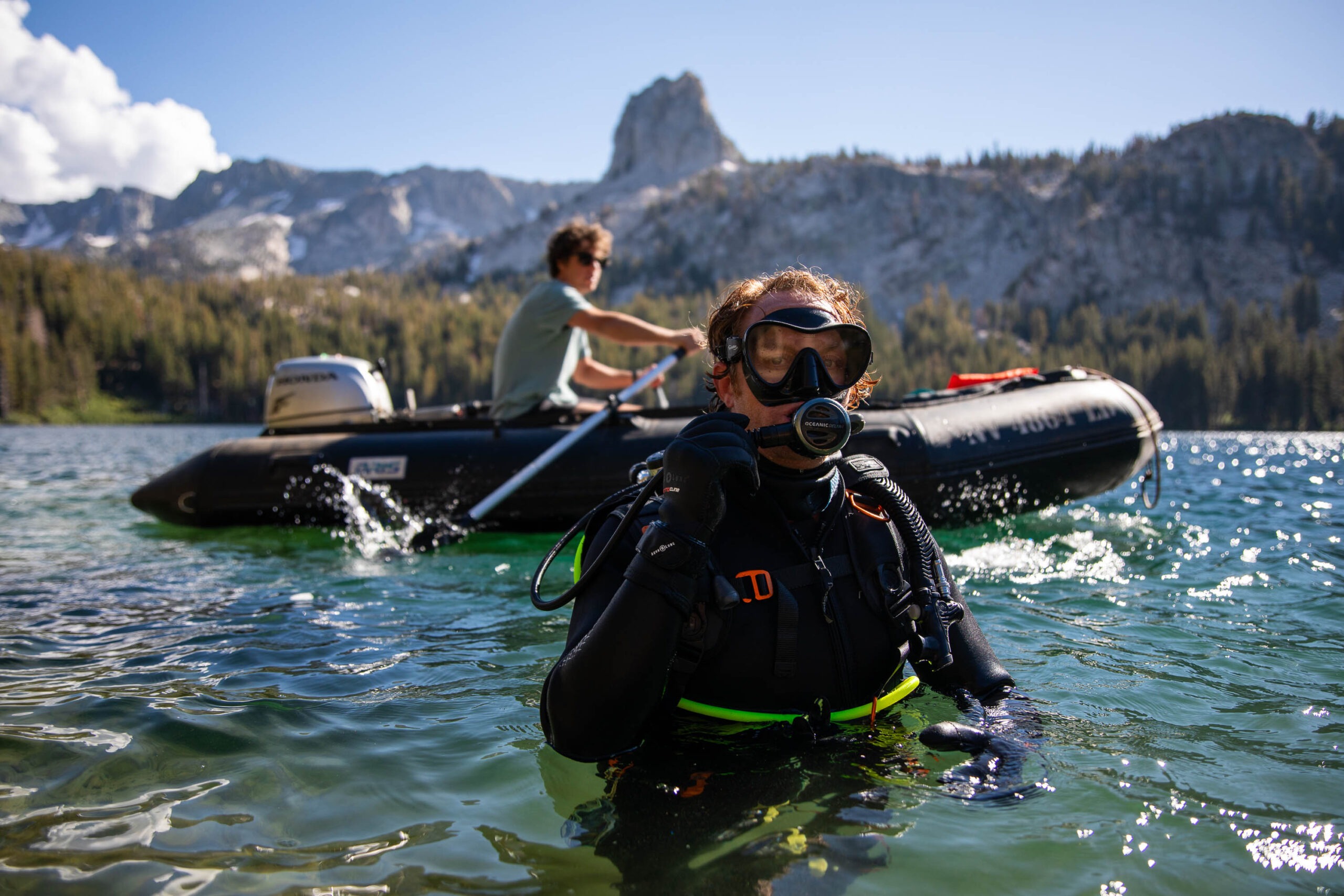Mammoth Lakes Tourism (MLT) announced a new fundraising campaign committed to cleaning up the region’s lakes in partnership with Clean Up The Lake (CUTL). Every dollar raised over the next four years (up to $100,000) will be matched by MLT.
Pilot research dives in four of the lakes in the Mammoth Lakes Basin including Lake George, Twin Lakes, Lake Mary and Lake Mamie over the past year resulted in a greater understanding of the environmental issues present – and remediation necessary – to ensure the health and future protection of the area’s namesake treasures.
Starting this week, volunteers from CUTL will be initiating a full-scale cleanup and aquatic invasive species survey of Lake George’s 2-mile circumference working with volunteer scuba divers, free divers and kayakers to remove fishing debris, plastic pollution and understand other threats to the environment.
“I couldn’t be more excited to be working in the Mammoth Lakes Basin this fall,” said CUTL Founder & Executive Director Colin West. “There is a widespread litter problem that has been ignored for decades in freshwater lakes all across the Sierra, and action is necessary to ensure the future protection of the region’s most valuable resource.”
Over the next four years, CUTL will also be working alongside MLT to engage with visitors and the local community to increase education and further volunteer efforts towards remediating the issues at hand.
Removal of submerged litter, documenting any and all aquatic invasive species threatening the lakes, working to protect animal species both above and below the surface, and prevention of future pollution are key goals of the partnership.
“Our investment in this program is a commitment to the natural resources that make this place so special,” said MLT Executive Director, John Urdi. “Not only will this work have an immediate impact on our pristine mountain lakes, but it will also highlight the importance of protecting the places we play, both for visitors, and locals alike. There is a big impact on our environment that is happening just below the surface. Much of this litter is out of sight and therefore, out of mind.”






